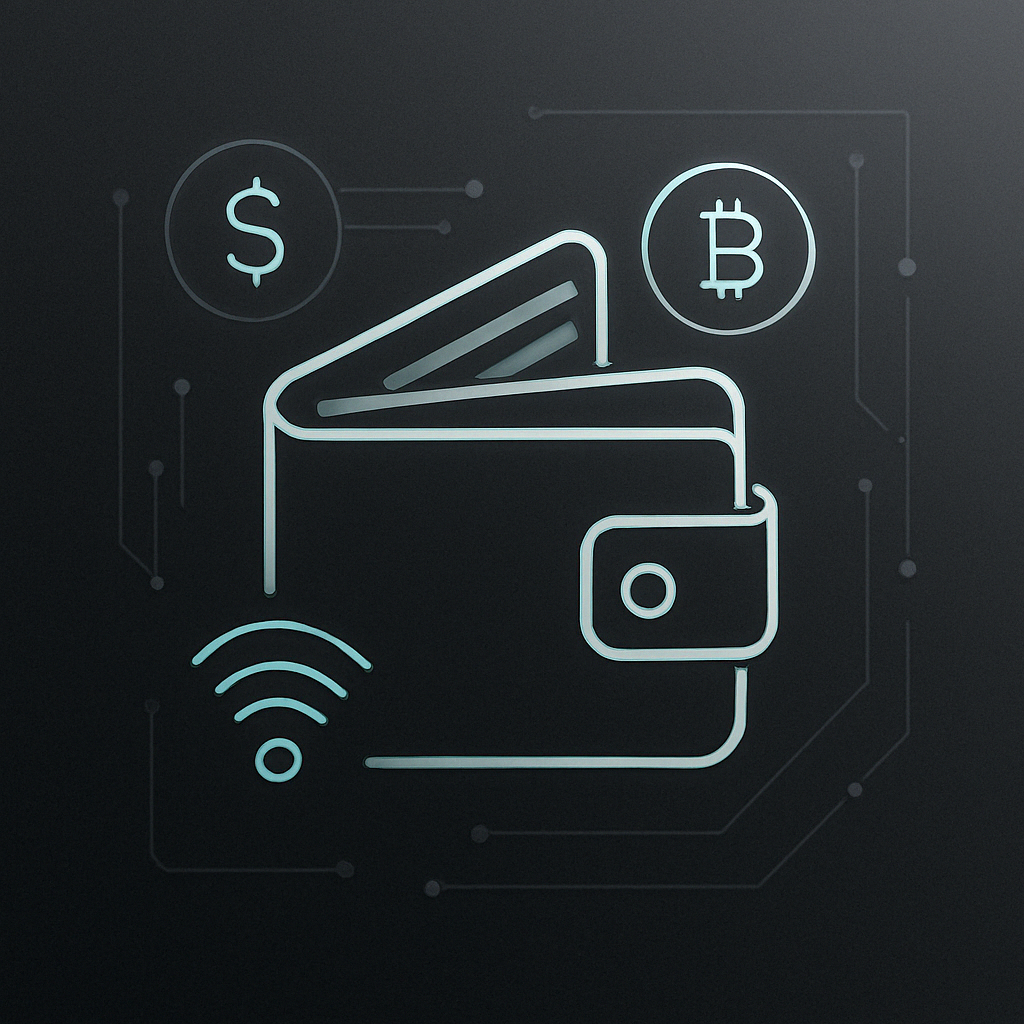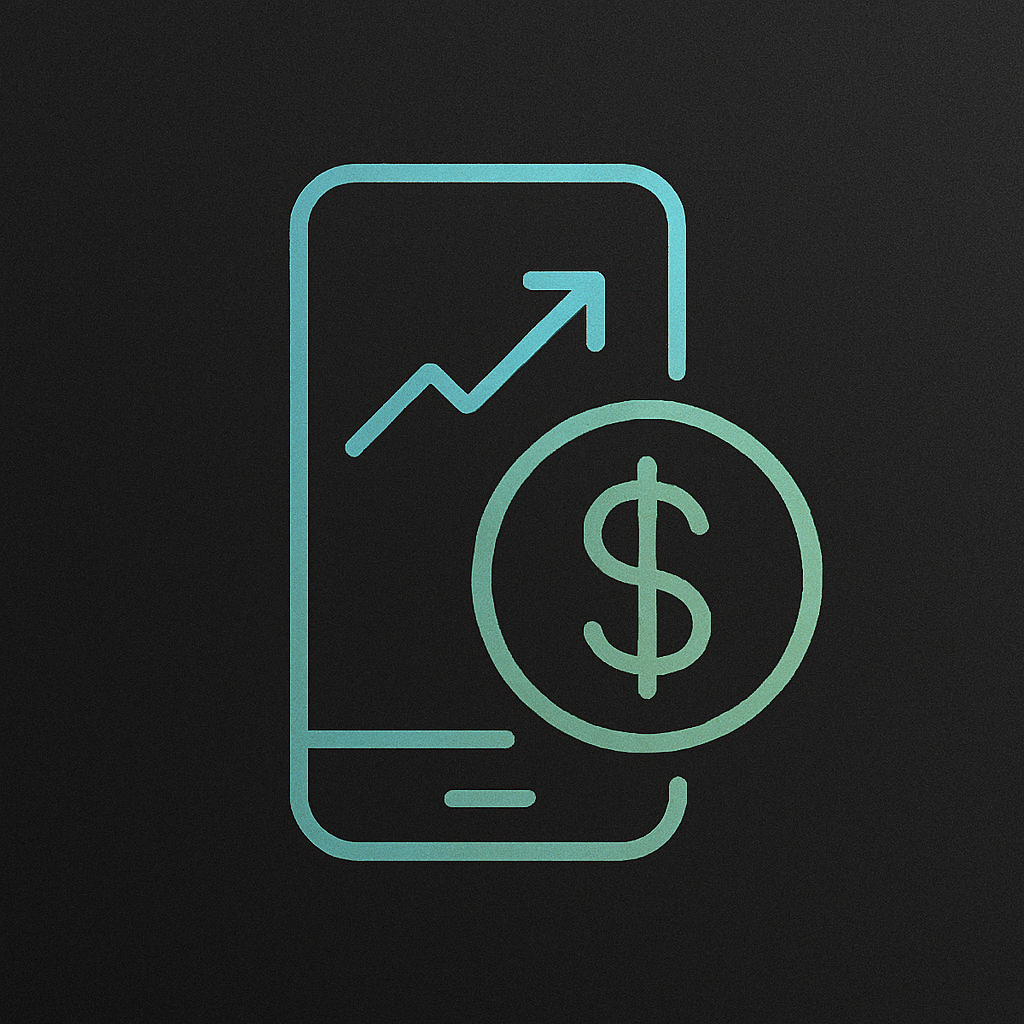A new era of digital finance is here.
E-wallets are reshaping the global financial landscape by offering faster payments, crypto integration, and borderless financial access. They serve as a digital gateway to the world of decentralized finance, enabling individuals to manage, store, and spend assets with unprecedented ease.
With over 5.5 billion mobile wallet users expected globally by 2025 (Statista), and the proliferation of crypto wallets growing at over 40% year-over-year, the growth trajectory of this technology is undeniable and transformative.
Key Takeaways
- E-wallets are bridging the gap between traditional banking and decentralized finance (DeFi).
- Crypto wallets and smart wallets enable secure and fast digital asset management.
- Financial inclusion is increasing due to mobile wallets in emerging markets.
- Trends in mobile payments and blockchain technology are accelerating global adoption.

What is an E-Wallet?
An e-wallet (electronic wallet) is a software-based system that securely stores users payment information and passwords for numerous payment methods and websites, highlighting the importance of “sicherheit” (safety and security) in digital transactions.
It allows users to make transactions quickly using smartphones, smartwatches, or online platforms.
The History of E-Wallets
E-wallets have improved significantly since their inception in the late 1990s and early 2000s. PayPal, founded in 1998, was one of the earliest and most recognized pioneers in the field, revolutionizing online payments and peer-to-peer transfers.
The first generation of e-wallets primarily focused on enabling online shopping and facilitating simple money transfers between users. As smartphones became more prevalent, e-wallet technology expanded to mobile devices, allowing consumers to make contactless payments in physical stores using technologies like NFC (Near Field Communication).
- In recent years, the rise of blockchain technology and cryptocurrencies has given birth to advanced crypto wallets and smart wallets. These wallets go far beyond simple payment storage, offering users full control over their digital assets and seamless access to decentralized finance (DeFi) ecosystems.
How E-Wallets Work
E-wallets work by encrypting user data and securely linking it with financial institutions or blockchain networks. When a user initiates a transaction, the e-wallet securely transmits encrypted payment details to the recipient or financial institution.
The security of this process relies on advanced encryption techniques and tokenization, which replaces sensitive data with unique codes, making transactions safer and reducing fraud risks.
In the context of crypto wallets, the system operates without intermediaries. Crypto wallets generate private and public keys, allowing users to sign and verify transactions directly on the blockchain.
Smart wallets go a step further by integrating automated financial operations through smart contracts, enabling users to interact with decentralized finance (DeFi) protocols for services like lending, staking, and swapping digital assets, all within the wallet interface.
Key Technologies:
- NFC (Near Field Communication) for contactless payments
- QR code scanning for easy transactions
- Blockchain for decentralized transactions and transparent ledgers
- AI algorithms for smart wallets that automate financial tasks, enhance security, and provide personalized financial insights
Types of E-Wallets
Mobile Wallets
Examples: Apple Pay, Google Pay, Samsung Pay
Mobile wallets dominate retail payments, with Apple Pay and Google Pay accounting for 507 million users globally in 2024 (Statista). These wallets are designed for quick and convenient day-to-day transactions, allowing users to make contactless payments in physical stores, online purchases, and even peer-to-peer transfers.
They securely store credit or debit card information and utilize encryption technology to protect user data. Mobile wallets are especially popular in regions with high smartphone penetration, driving the shift towards cashless economies.
Crypto Wallets
Examples: MetaMask, Trust Wallet, Coinbase Wallet
Crypto wallets store digital assets securely. Over 80 million crypto wallets were in use globally by the end of 2024 (Blockchain.com).
These wallets are essential for managing cryptocurrencies, interacting with decentralized applications (dApps), and participating in blockchain-based financial systems. Users can send, receive, and store various cryptocurrencies, including Bitcoin, Ethereum, stablecoins, and tokens.
Crypto wallets offer a higher degree of financial autonomy, enabling users to retain full control over their private keys and digital assets.
Smart Wallets
Smart wallets like Argent or Rainbow integrate DeFi functionalities, enabling users to access decentralized applications (dApps) and yield farming protocols. They go beyond traditional storage functions by allowing users to engage in advanced financial operations such as staking, lending, and asset swapping directly within the wallet interface.
- Smart wallets often feature automated security mechanisms, multi-signature access, and integration with DeFi platforms, creating a seamless user experience for managing digital wealth in a decentralized environment.

E-Wallets vs Traditional Banking
| Feature | E-Wallets | Traditional Banking |
|---|---|---|
| Speed | Instant payments | 1-3 business days |
| Fees | Low to zero | Higher fees for transfers |
| Accessibility | Global reach | Local restrictions |
| Decentralization | Yes (crypto wallets) | No |
The Role of Stablecoins in E-Wallets
Stablecoins like USDC and USDT have become a critical component of modern e-wallets, providing price stability in volatile crypto markets. In 2023 alone, stablecoins facilitated over $7 trillion in transactions globally (Circle report), surpassing the annual volume of many traditional payment processors.
Their seamless integration into e-wallets has transformed how users interact with and store digital value.
Why Stablecoins Matter in E-Wallets:
- Price Stability: Pegged to fiat currencies like the US Dollar, stablecoins offer a reliable store of value amid crypto market fluctuations.
- Cross-Border Efficiency: They enable near-instant, low-fee international payments, bypassing traditional banking rails.
- DeFi On-Ramp: Stablecoins serve as the backbone of many DeFi platforms, allowing users to earn yield, provide liquidity, and borrow assets.
- Inflation Protection: In economies with hyperinflation, stablecoins act as a safe haven compared to local currencies.
- Universal Interoperability: They are supported across hundreds of e-wallets, exchanges, and dApps, ensuring high liquidity and functionality.
Impact of CBDCs on the Future of E-Wallets
Central Bank Digital Currencies (CBDCs) are digital versions of fiat currencies issued by national central banks, aiming to modernize monetary systems and improve financial accessibility. The introduction of CBDCs is expected to significantly reshape the e-wallet ecosystem by blending government-backed stability with the efficiency of digital technologies.
Key impacts of CBDC integration into e-wallets include:
- Interoperability with Smart Wallets: CBDCs can be seamlessly integrated with existing smart wallets, allowing users to hold both traditional and decentralized assets within a single interface.
- Regulatory-Backed Trust: As state-issued digital currencies, CBDCs bring enhanced legitimacy and public trust, which can increase adoption across a broader demographic.
- Improved Cross-Border Transactions: CBDCs could revolutionize global remittances by minimizing currency conversion costs and processing delays.
- Programmable Money: Governments may use CBDCs to enable programmable features such as expiration dates on stimulus funds or targeted subsidies.
- Monetary Policy Innovation: Central banks gain new tools for implementing real-time economic interventions directly through digital wallets.
Leading countries in CBDC development include:
- China: Digital Yuan pilot program is currently being tested in over 25 cities.
- European Union: The Digital Euro is in its advanced exploration phase, with pilot testing expected across member states.
- Nigeria: The eNaira became the first African CBDC in 2021, focusing on financial inclusion and digital transaction security.
- Bahamas: The Sand Dollar is already in public circulation, providing a real-world example of full-scale CBDC deployment.

Features to Look for When Choosing an E-Wallet
| Criteria | Importance |
| Security | End-to-end encryption, biometric authentication |
| Supported Assets | Fiat, cryptocurrencies, NFTs |
| User Interface | Intuitive design, ease of use |
| DeFi Integration | Access to lending, staking, and dApps |
| KYC Requirements | Varying levels of digital identity verification |
| Global Accessibility | Availability across countries |
Top 10 Best E-Wallets in 2025
| Wallet | Description | Pros | Cons |
| MetaMask | Leading crypto wallet for DeFi and NFTs, supports Ethereum and multiple blockchains. | Great DeFi access, user-controlled private keys | Not beginner-friendly, no fiat support |
| Trust Wallet | Multi-asset wallet supporting 60+ blockchains and tokens, highly secure and easy to use. | Wide crypto support, user-friendly interface | Limited fiat integration |
| Revolut | All-in-one finance app offering banking, crypto trading, and global payments. | Supports multiple currencies, banking features | Some features locked behind premium subscription |
| Cash App | Simple mobile payment solution with Bitcoin integration and peer-to-peer transfers. | Easy to use, Bitcoin support | Limited crypto support beyond Bitcoin |
| PayPal | Global payment giant enabling both fiat and crypto transactions for millions of users. | Widely accepted, fiat and crypto payments | Higher transaction fees |
| Apple Pay | Top mobile wallet for seamless NFC payments across Apple devices and integrated platforms. | Secure payments, strong Apple ecosystem | Limited to Apple devices |
| Binance Pay | Payment service integrated with Binance exchange, supports crypto transfers globally. | Crypto ecosystem, low fees | Requires Binance account |
| Crypto.com Wallet | Multi-asset wallet with support for crypto payments, DeFi, and NFTs. | Wide asset support, DeFi access | Complex for beginners |
| Skrill | International wallet for fiat and crypto payments, popular for online gaming and e-commerce. | Easy fiat-to-crypto conversion, global reach | High withdrawal fees |
| Google Pay | Seamless mobile wallet integrated into Android devices, supporting contactless payments. | Widely accepted, user-friendly | Limited crypto functionality |
E-Wallet Adoption Statistics 2025
The global e-wallet market is projected to reach $10 trillion in transaction volume by 2025 (Juniper Research), driven by the increasing demand for contactless payments and the rise of mobile-first financial solutions.
Asia-Pacific leads in adoption, with China having over 90% mobile payment penetration (Statista), largely due to the widespread use of apps like Alipay and WeChat Pay, which have revolutionized the payments landscape.
Over 300 million people globally used crypto wallets by late 2024 (Crypto.com Research), showcasing the growing popularity of blockchain-based financial ecosystems and the increasing role of cryptocurrencies in everyday transactions.
Emerging markets in Africa and Latin America are experiencing rapid e-wallet adoption, largely driven by mobile money services that provide essential financial access to the unbanked population.

How E-Wallets Are Powering Financial Inclusion
E-wallets are critical in providing access to financial services for 1.7 billion unbanked adults worldwide (World Bank). By offering a low-cost and easily accessible alternative to traditional banking, e-wallets have become essential tools in bridging the financial gap in underserved regions.
They provide secure platforms for storing money, making transactions, and accessing credit, even in areas without physical bank branches.
Use Cases:
- Mobile money in Africa (M-Pesa) – M-Pesa has revolutionized financial services in Kenya and neighboring countries, enabling users to send and receive money, pay bills, and access micro-loans using simple mobile phones.
- DeFi wallets in Latin America – In regions with unstable currencies, decentralized finance (DeFi) wallets allow users to store stablecoins, earn yield, and access decentralized lending platforms without relying on traditional banks.
- Cross-border remittances using crypto wallets – E-wallets equipped with crypto functionalities provide a faster and cheaper solution for sending money across borders, reducing the high fees often associated with conventional remittance services.
Best E-Wallets for Crypto Payments
| Wallet | Supported Chains | Security Features |
| MetaMask | Ethereum, Polygon, BSC | Hardware wallet integration |
| Trust Wallet | 60+ blockchains | Biometric access |
| Binance Pay | Binance Smart Chain | Payment QR code support |
| Crypto.com Wallet | 250+ coins | Two-factor authentication |
The Future of Money: How E-Wallets Are Changing Global Finance
E-wallets are poised to dominate the financial industry through a combination of cutting-edge technologies and shifting consumer demands. As digital finance continues to improve, these wallets will play an integral role in creating a borderless, inclusive, and efficient global economy.
- DeFi wallet integration: Enabling users to access decentralized financial services such as lending, borrowing, and staking directly from their wallets without intermediaries.
- Tokenized assets and stablecoins: Allowing users to hold tokenized versions of real-world assets like real estate, stocks, and stablecoins pegged to fiat currencies, reducing volatility and improving transaction efficiency.
- CBDC (Central Bank Digital Currency) adoption: Integrating government-issued digital currencies that offer enhanced security, trust, and faster transaction settlement.
- AI-driven finance management: Providing personalized financial advice, automated savings, and smart transaction alerts powered by artificial intelligence.
- Global interoperability: Enabling seamless transfers across multiple blockchains and financial networks, fostering a truly connected and inclusive financial ecosystem.
Gartner predicts that by 2030, 70% of new financial transactions will use blockchain-based wallets, highlighting the transformative potential of this technology in reshaping the future of money.
E-Wallet Trends for 2025 and Beyond
- AI-powered financial management
- Decentralized Identity (DID) integration
- NFT wallets for storing and trading digital collectibles
- Layer 2 wallet solutions for faster and cheaper transactions
- Cross-chain interoperability enabling seamless multi-chain asset management
Challenges and Risks
Despite the rapid adoption and transformative potential of e-wallets, several challenges and risks need to be addressed to ensure user safety and long-term sustainability.
- Cybersecurity threats and phishing attacks: As e-wallets handle sensitive financial information, they are frequent targets for hackers and fraudsters.
Users are vulnerable to phishing schemes, malware attacks, and unauthorized access if security measures are not in place.
- Regulatory hurdles across jurisdictions: E-wallet providers face complex and often fragmented regulatory frameworks that vary by country and region. Compliance with anti-money laundering (AML), know-your-customer (KYC), and financial reporting standards adds operational challenges, especially for global platforms.
- Data privacy concerns for users: The collection and storage of user data by e-wallet providers raise concerns about privacy and data protection. There is an increasing demand for transparent data policies and decentralized solutions that give users greater control over their personal information.

Conclusion
E-wallets are shaping the future of global finance by enabling decentralized, secure, and inclusive financial systems. Their ability to facilitate fast, low-cost, and borderless transactions is revolutionizing the way people access and manage money across the world.
The integration of crypto wallets, smart wallets, and DeFi applications marks a new chapter in global payments, empowering users with greater financial autonomy and unlocking new opportunities in the digital economy.
Read Next:
FAQ
1. What is the difference between a mobile wallet and a crypto wallet?
Mobile wallets store traditional fiat currency, typically linked to a bank account or credit card, and are primarily used for contactless payments and online purchases.
Crypto wallets, on the other hand, are designed to store and manage digital assets like Bitcoin, Ethereum, and stablecoins, and often provide access to decentralized finance (DeFi) applications.
2. Are e-wallets safe to use?
E-wallets are generally safe to use, as they utilize encryption, tokenization, and multi-factor authentication to protect user data and funds.
However, users should still follow best practices such as using strong passwords, enabling biometric security features, and avoiding suspicious links to reduce the risk of fraud or unauthorized access.
3. Can I use an e-wallet for international payments?
Yes, many e-wallets support international transactions and offer lower fees and faster settlement times compared to traditional banking systems.
This is especially true for wallets that support cryptocurrencies or stablecoins, which enable seamless cross-border transfers without relying on intermediaries.
4. What is a smart wallet?
A smart wallet is a next-generation digital wallet that incorporates features like AI-based financial management, integration with DeFi protocols, and automation of tasks such as bill payments and portfolio rebalancing.
These wallets often support multi-asset storage and offer enhanced security through programmable smart contracts.
5. What is the future of e-wallets?
The future of e-wallets lies in deeper integration with decentralized finance, the adoption of AI-driven personalization, and the use of blockchain to enable secure, global, and instant transactions.
As financial ecosystems improve, e-wallets will continue to play a key role in promoting financial inclusion and redefining how value is stored and transferred.

